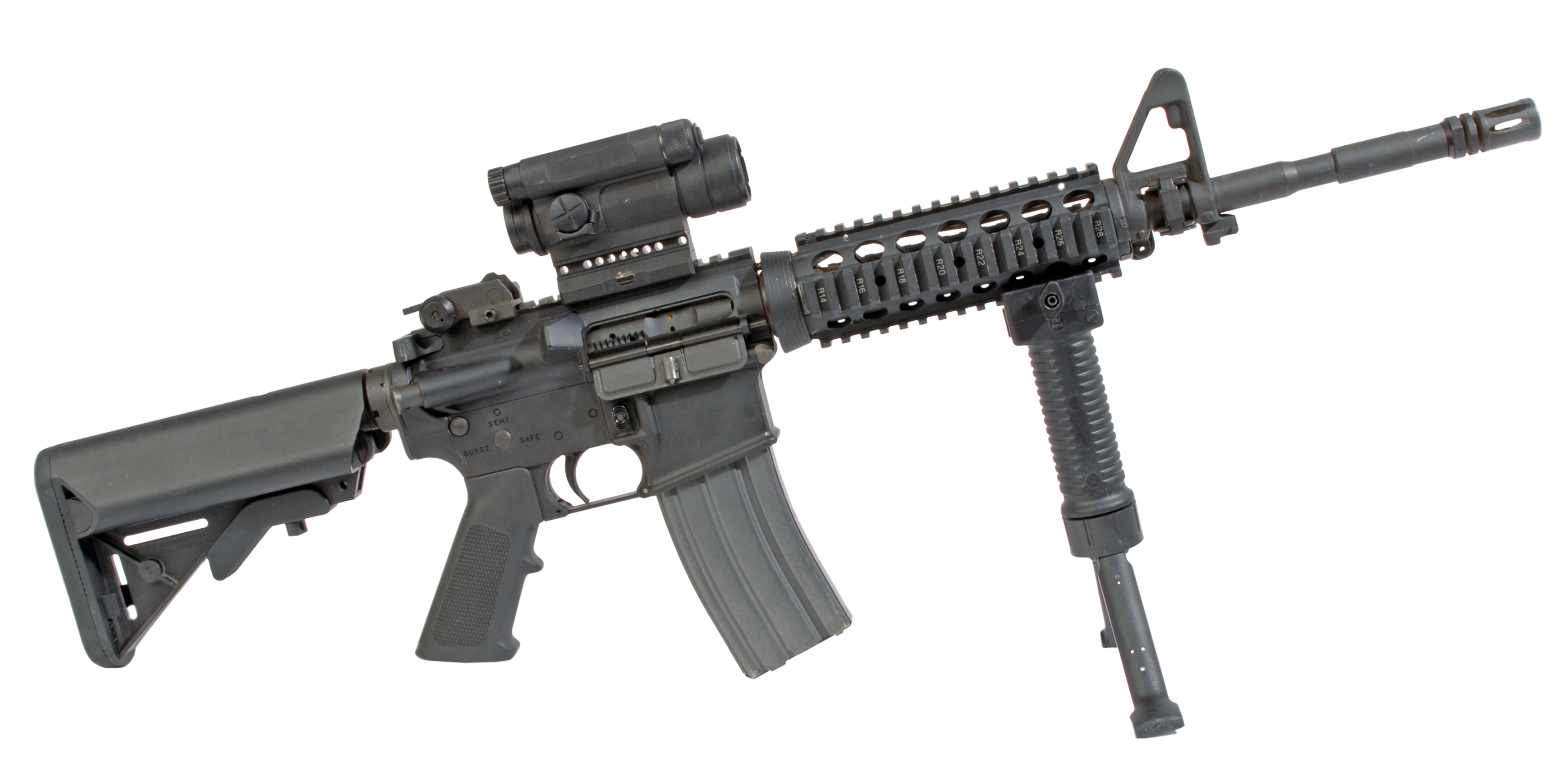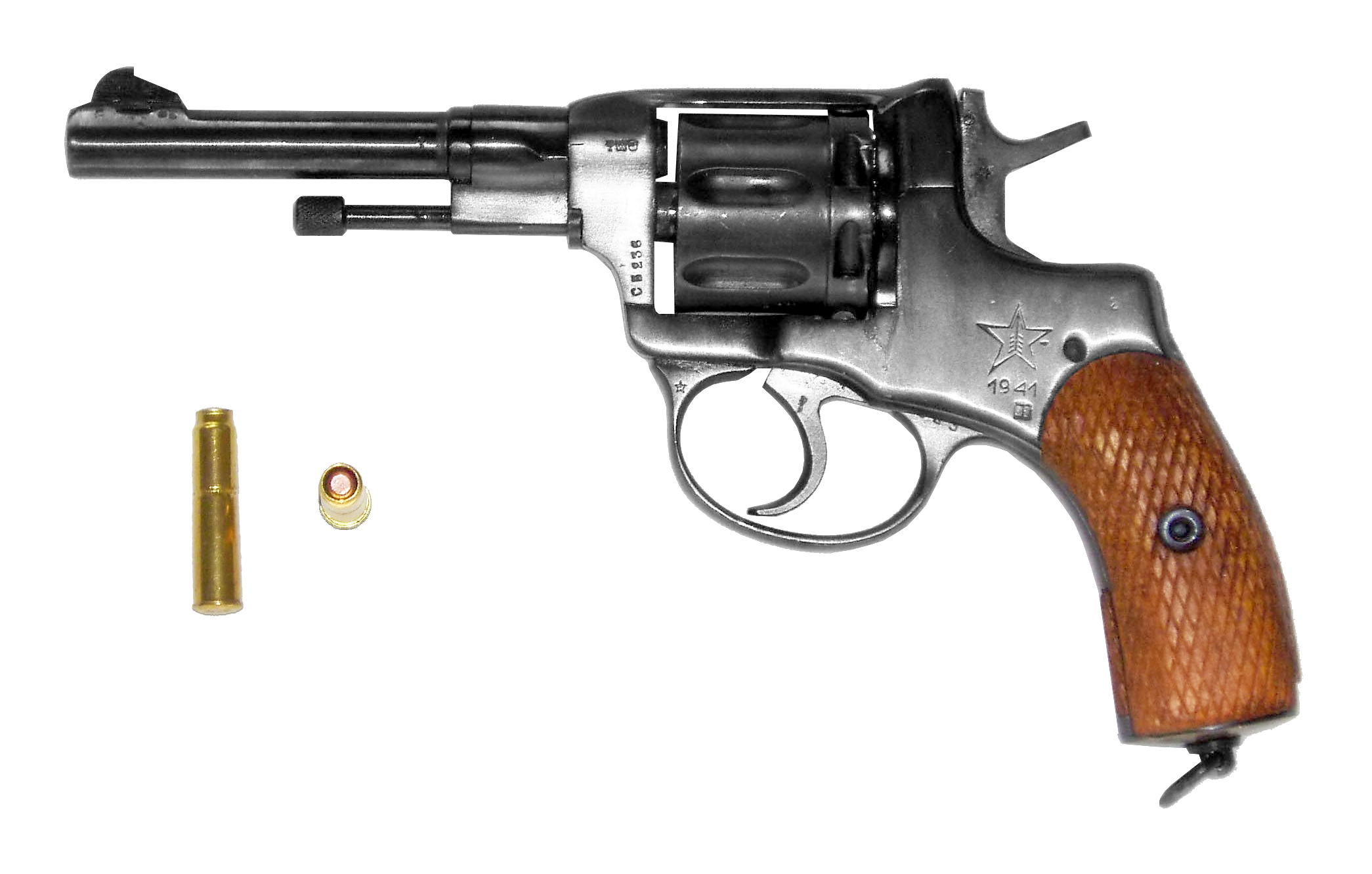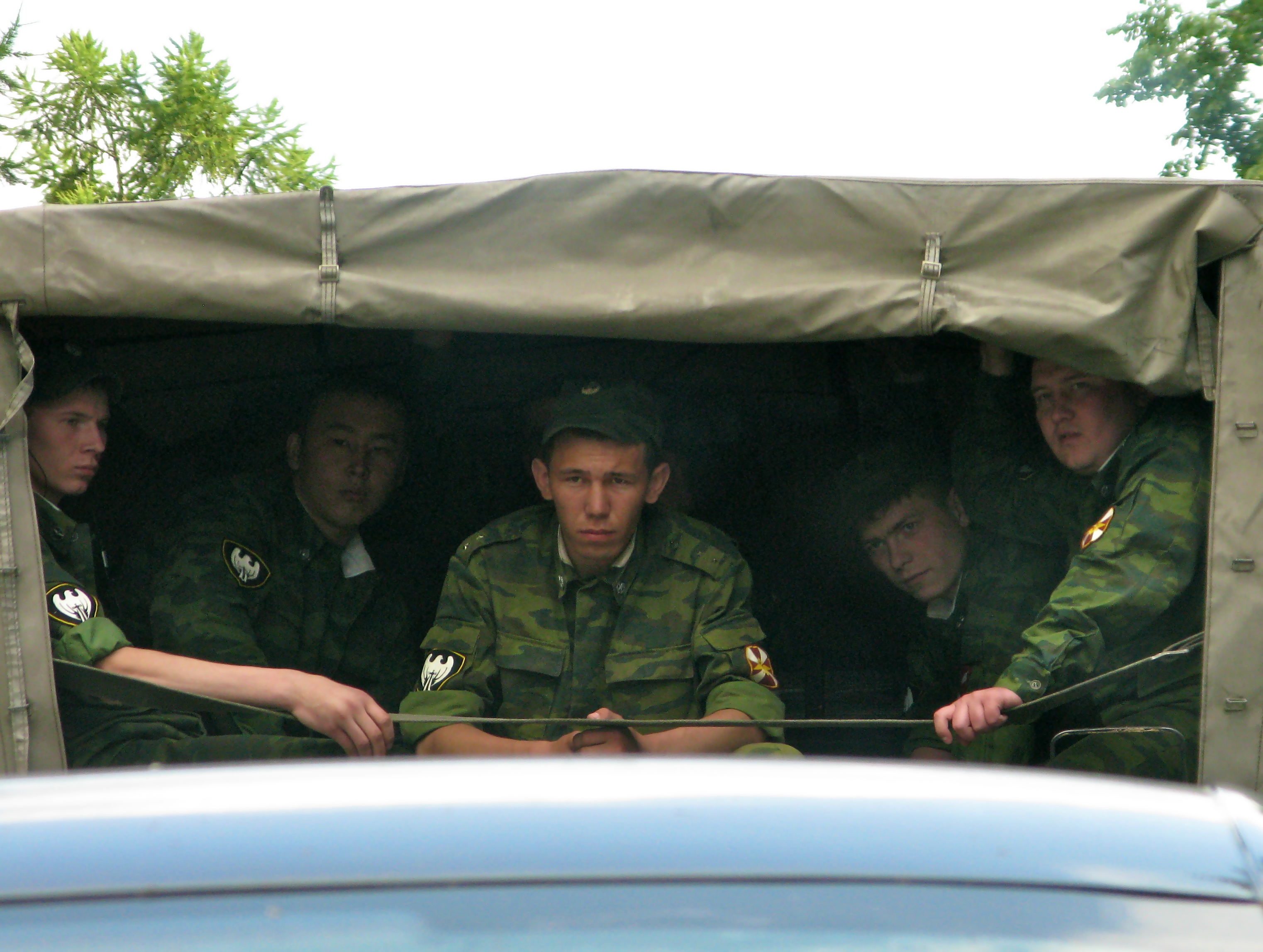|
GSh-18 06
The GSh-18 (Cyrillic: Г Ш-18) is a 9 mm semi-automatic pistol developed by the KBP Instrument Design Bureau in Tula during the 1990s. The pistol's name is derived from its designers—Gryazev and Shipunov—and its magazine capacity of 18 rounds. Design details The GSh-18 is a rotating-barrel, short recoil, locked-breech pistol with 10 locking lugs spaced equally around the barrel, the large locking surface area resulting in a strong lockup, making it suitable for high-velocity ammunition loads. The GSh-18 may be employed using standard 9×19mm Parabellum rounds, but was designed for the high velocity, Russian armour-piercing 9×19mm 7N31 round. The pistol incorporates a pre-set striker. The slide and working parts are steel, and the weapon has a polymer frame. Two different designs of grip have been observed. The magazine capacity is 18 rounds, and an additional round may be carried in the chamber. The magazine release is reversible for left-handed shooters and the ejector d ... [...More Info...] [...Related Items...] OR: [Wikipedia] [Google] [Baidu] |
Semi-automatic Pistol
A semi-automatic pistol is a type of repeating single-chamber handgun ( pistol) that automatically cycles its action to insert the subsequent cartridge into the chamber (self-loading), but requires manual actuation of the trigger to actually discharge the following shot. As a result, only one round of ammunition is fired each time the trigger is pulled, as the pistol's fire control group disconnects the trigger mechanism from the firing pin/ striker until the trigger has been released and reset. Additional terms sometimes used as synonyms for a semi-automatic pistol are self-loading pistol, autopistol, autoloading pistol, and automatic pistol (E.G.: Automatic Colt Pistol). A semi-automatic pistol recycles part of the energy released by the propellant combustion to move its bolt, which is usually housed inside the slide. After a round of ammunition is fired, the spent cartridge casing is extracted and ejected as the slide/bolt moves rearwards under recoil, the hammer/s ... [...More Info...] [...Related Items...] OR: [Wikipedia] [Google] [Baidu] |
Picatinny Rail
The Picatinny rail ( or ), or Pic rail for short, also known as a MIL-STD-1913 rail, 1913 rail or STANAG 2324 rail (cancelled), is a military standard rail interface system that provides a mounting platform for firearm accessories. It was originally used for mounting of scopes atop the receivers of larger caliber rifles. Once established, its use expanded to also attaching other accessories, such as: iron sights, tactical lights, laser aiming modules, night vision devices, reflex sights, holographic sights, foregrips, bipods, slings and bayonets. An updated version of the rail is adopted as a NATO standard as the STANAG 4694 NATO Accessory Rail. Significance Because of their many uses, Picatinny rails and accessories have replaced iron sights in the design of many firearms and available as aftermarket add-on parts for most actions that do not have them integrated, and they are also on the undersides of semi-automatic pistol frames and grips. When adding a Picat ... [...More Info...] [...Related Items...] OR: [Wikipedia] [Google] [Baidu] |
MR-443 Grach
The MP-443 ''Grach'' (russian: MП-443 Грач, lit=rook) or "PYa", for "''Pistolet Yarygina'' ("Yarygin Pistol"), following traditional Russian naming procedure (russian: Пистолет Ярыгина), is the Russian standard military-issue side arm. The development was headed by the designer . It was developed under designation "'' Grach''" in response to Russian military trials, which began in 1993. In 2003, it was adopted as a standard sidearm for all branches of Russian military and law enforcement, alongside the Makarov PM, GSh-18, and SPS. Design details The PYa is a high-capacity, double-action, short-recoil semi-automatic pistol. Barrel/slide locking is a simplified Colt– Browning design, similar to that found in many modern pistols (for example the SIG Sauer and Glock families of pistols); the breech end of the barrel is rectangular in shape, rather than rounded, and fits into matching locking grooves within the slide, near the ejection port. The slide stop ... [...More Info...] [...Related Items...] OR: [Wikipedia] [Google] [Baidu] |
List Of Russian Weaponry
The following is a list of modern Russian small arms and light weapons which were in service in 2016: Handguns Revolvers Pistols Special purpose Submachine guns Special purpose Shotguns Rifles Bolt-action Semi-automatic Selective-fire Special purpose Anti-materiel rifles Machine guns Squad automatic weapons (SAWs) General-purpose Heavy Hand grenades Fragmentation Anti-tank Grenade launchers Stand-alone Attached Automatic grenade launchers Rocket launchers General purpose Incendiary and thermobaric Special purpose Recoilless rifles Mortars Anti-tank guided missiles Man-portable air defense system Landmines See also * List of equipment of the Russian Ground Forces * List of Russian weaponry makers References {{DEFAULTSORT:Russian small arms and light weapons Weapons of Russia Lists of weapons Firearms of Russia, Russian and Soviet milita ... [...More Info...] [...Related Items...] OR: [Wikipedia] [Google] [Baidu] |
Law Enforcement In Syria
Law enforcement in Syria is carried out by the Public Security Police, which is a force for general policing duties; internal security duties are carried out by different intelligence agencies. The Political Security Directorate is one of these agencies and is under the guidance of the Ministry of Interior of the Syrian government. The Directorate is used for covert intelligence gathering and internal security issues within Syria. Syria has been an INTERPOL member since 1953. Since the outbreak of the Syrian Civil War, much of Syria has been outside the control of the Syrian government. Currently, the Asayish are responsible for policing in the Autonomous Administration of North and East Syria, the Turkish-backed Free Syrian Police in areas under the Turkish occupation of northern Syria, and various Syrian opposition groups around Idlib The Ministry of Interior controls the Internal Security Forces. There are also other specialized organizations, such as the special metro ... [...More Info...] [...Related Items...] OR: [Wikipedia] [Google] [Baidu] |
Syrian Armed Forces
The Syrian Arab Armed Forces ( ar, الْقُوَّاتُ الْمُسَلَّحَةُ الْعَرَبِيَّةُ السُّورِيَّةُ, al-Quwwāt al-Musallaḥah al-ʿArabīyah as-Sūrīyah) are the military forces of the Syrian Arab Republic. They consist of the Syrian Arab Army, Syrian Arab Air Force, Syrian Arab Navy, Syrian Arab Air Defense Force, and paramilitary forces, such as the National Defence Force. According to the Syrian constitution, the President of Syria is the Commander-in-Chief of the Armed Forces. The military is a conscripted force; males serve in the military upon reaching the age of 18, but they are exempted from service if they do not have a brother who can take care of their parents. Since the Syrian Civil War, the enlisted members of the Syrian military have dropped by over half from a pre-civil war figure of 325,000 to 150,000 soldiers in the army in December 2014, due to casualties, desertions and draft dodging, reaching between 178,000 ... [...More Info...] [...Related Items...] OR: [Wikipedia] [Google] [Baidu] |
Law Enforcement In Russia
In the Russian Federation, law enforcement is the responsibility of a variety of different agencies. The Russian police (formerly the ') are the primary law enforcement agency, with the Investigative Committee of Russia as the main investigative agency, and the Federal Security Service (FSB) as the main domestic security agency. Agencies *Ministry of Internal Affairs: ** The Police of Russia (') provide public security functions. Formerly the ' ** Main Directorate for Drugs Control * The Investigative Committee of Russia is an investigative body, sometimes described as the "Russian FBI". * Ministry of Justice: ** Federal Service of Punishment Execution (FSIN) is responsible for the penal correction and prison system of Russia * The Federal Security Service (FSB) is the domestic security service, and the main successor agency of the Soviet-era Cheka, NKVD, and KGB. Responsible for anti-terrorism operations. ** The Federal Border Guard Service is subordinate to the FSB and re ... [...More Info...] [...Related Items...] OR: [Wikipedia] [Google] [Baidu] |
Ministry Of Internal Affairs (Russia)
The Ministry of Internal Affairs of the Russian Federation (MVD; russian: Министерство внутренних дел (МВД), ''Ministerstvo vnutrennikh del'') is the interior ministry of Russia. The MVD is responsible for law enforcement in Russia through its agencies the Police of Russia, Migration Affairs, Drugs Control, Traffic Safety, the Centre for Combating Extremism, and the Investigative Department. The MVD is headquartered in Zhitnaya Street 16 in Yakimanka, Moscow. The MVD claims ancestry from the Ministry of Internal Affairs of the Russian Empire founded in 1802 by Tsar Alexander I which became the interior ministry of the Russian Republic, the Russian Soviet Federative Socialist Republic, and the Soviet Union. The MVD was dissolved and reformed several times during the Stalin era until being established as the Ministry of Internal Affairs of the USSR in 1946. The current MVD was formed in 1990 from the Russian branch of the MVD of the USSR shortly ... [...More Info...] [...Related Items...] OR: [Wikipedia] [Google] [Baidu] |
Ministry Of Justice (Russia)
The Ministry of Justice of the Russian Federation (russian: Министе́рство юсти́ции Росси́йской Федера́ции, Миню́ст Росси́и) is a ministry of the Government of Russia responsible for the legal system and penal system. The Ministry of Justice is the federal authority for operating Russia's courts and correctional services with enforcement by two subordinate executive federal agencies: the Federal Bailiffs Service (FSSP) and the Federal Penitentiary Service (FSIN). The Ministry of Justice is headquartered at Zhitnaya Street 14 in Yakimanka District, Central Administrative Okrug, Moscow. The Ministry of Justice was founded in 1991 by renaming of the Ministry of Justice of the Russian SFSR following the dissolution of the Soviet Union, but claims succession from the Ministry of Justice of the Russian Empire founded in 1802. Konstantin Chuychenko has been the Minister of Justice since 21 January 2020. Functions According to th ... [...More Info...] [...Related Items...] OR: [Wikipedia] [Google] [Baidu] |
Internal Troops
The Internal Troops, full name Internal Troops of the Ministry for Internal Affairs (MVD) (russian: Внутренние войска Министерства внутренних дел, Vnutrenniye Voiska Ministerstva Vnutrennikh Del; abbreviated ''ВВ'', ''VV''), alternatively translated as "Interior (Troops or Forces)", is a paramilitary gendarmerie-like force mostly in successor states of the Soviet Union and in other countries as well, including in Russia (until 2016), Ukraine (until 2014), Georgia (until 2004), Kazakhstan (until 2014), Kyrgyzstan, Azerbaijan, Belarus, Turkmenistan, and Tajikistan. It is also maintained as reserve forces in the Armed Forces of Mongolia. Internal Troops are subordinated to the interior ministries of the respective countries. They were designed to be used to support and reinforce the ''Militsiya'' (police forces), deal with large-scale crowd control, internal armed conflicts, prison security (except in Russia) and safeguarding of highly ... [...More Info...] [...Related Items...] OR: [Wikipedia] [Google] [Baidu] |
Armed Forces Of The Russian Federation
The Armed Forces of the Russian Federation (, ), commonly referred to as the Russian Armed Forces, are the military forces of Russia. In terms of active-duty personnel, they are the world's fifth-largest military force, with at least two million reserve personnel. Their branches consist of the Ground Forces, the Navy, and the Aerospace Forces, as well as three independent arms of service: the Strategic Rocket Forces, the Airborne Forces, and the Special Operations Forces. In 2021, Russia had the world's fifth-highest military expenditure at . The Russian Armed Forces possess the world's largest stockpile of nuclear weapons. They operate the second-largest fleet of ballistic missile submarines, and are one of only three national militaries (alongside those of the United States and China) that operate strategic bombers. With certain exceptions, Russian law mandates one year of military service for all male citizens aged 18–27, though conscripts are generally not d ... [...More Info...] [...Related Items...] OR: [Wikipedia] [Google] [Baidu] |
Non-lethal Weapon
Non-lethal weapons, also called nonlethal weapons, less-lethal weapons, less-than-lethal weapons, non-deadly weapons, compliance weapons, or pain-inducing weapons are weapons intended to be less likely to kill a living target than conventional weapons such as knives and firearms with live ammunition. It is often understood that unintended or incidental casualties are risked wherever force is applied, but non-lethal weapons try to minimise the risk of casualties (e.g. serious/permanent injuries or death) as much as possible. Non-lethal weapons are used in policing and combat situations to limit the escalation of conflict where employment of lethal force is prohibited or undesirable, where rules of engagement require minimum casualties, or where policy restricts the use of conventional force. These weapons occasionally cause serious injuries or death; the term "less-lethal" has been preferred by some organizations as it describes the risks of death more accurately than the term ... [...More Info...] [...Related Items...] OR: [Wikipedia] [Google] [Baidu] |


.png)


